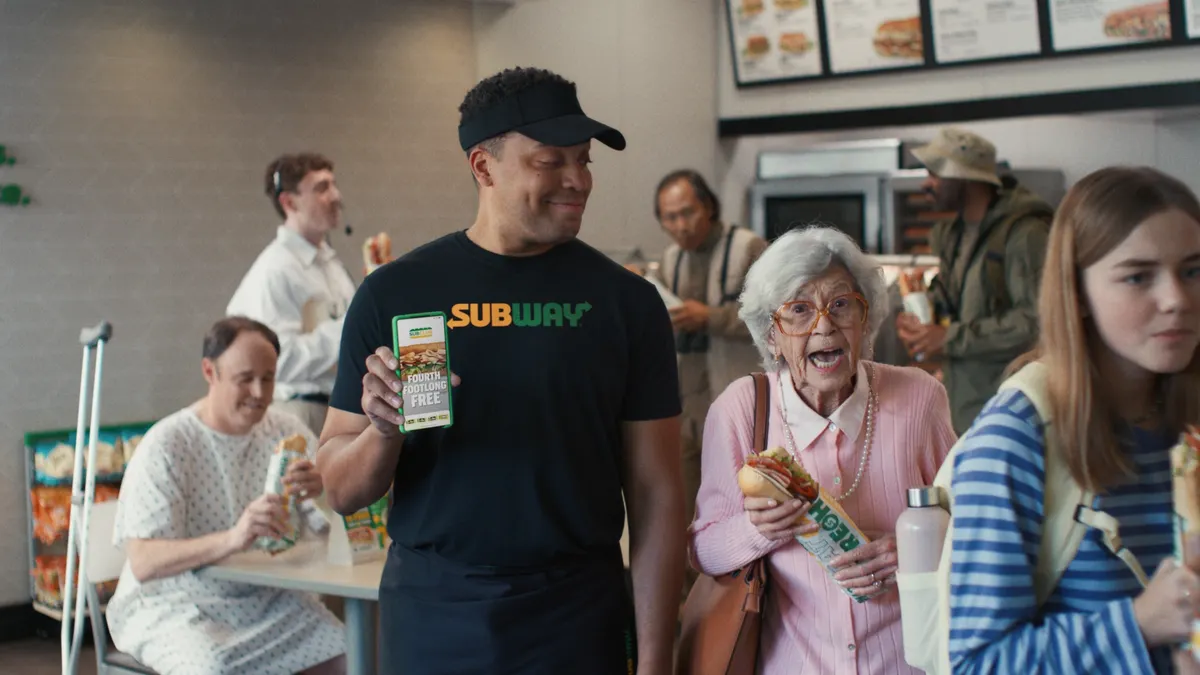Halloween has come and gone, and the holiday marketing season is in full swing.
Even though research from Oracle Marketing Cloud and Edison found a good amount of holiday shopping gets done in October, there’s a lot of marketing yet to happen. Black Friday and Cyber Monday are still weeks away, and of course there's that final push through the season.
There are many emails to be sent; data to take advantage of to personalize campaigns in what can otherwise become an impersonal marketing dash; and tips to follow to make sure you optimize those all-important mobile campaigns. With the help of data and predictions on what to expect this year, as well as some bonus insight, you will be able to make any last-minute adjustments that turn a good holiday marketing strategy into a great one.
Data, trends and the all-important potential budget pivot
Anne Hallock, VP of marketing and communications at demand side ad platform The Trade Desk, spoke with Marketing Dive about emerging trends and data from last year that could impact this year’s holiday marketing.
First up, the top five online shopping days from last year:
- December 1 ($2.0B)
- December 2 ($1.8B)
- December 8 ($1.6B)
- November 28 ($1.5B)
- December 12 ($1.4B)
And based on last year’s numbers, Hallock predicts Cyber Monday will be as big, and maybe bigger, than Black Friday this year. She said marketers should focus on providing a unique customer experience. What's more, she said, half of all consumers want marketers to use personal information to coordinate better shopping experiences, but only a quarter feel retailers actually understand them.
Hallock said, “Marketers should also embrace omnichannel. Consumers don’t think of their shopping experience in terms of channels, so marketers shouldn’t isolate one channel over another. For example, we saw that in 2014, 25% of holiday shoppers used a smartphone to purchase a holiday gift and 44.6% of online traffic during the holiday season came from mobile devices.”
She also pointed out that even though holiday marketing can be hectic, your strategy shouldn’t be static. Instead you should stay on top of where your holiday marketing dollars are going and not be afraid to make changes if they are warranted.
“The holiday shopping season is very dynamic – one product might be a surprise hit with an unexpected demographic and you'll have to shift funds unexpectedly,” Hallock explained. “These kinds of pivots can be made with programmatic, where precise reach can be achieved at large scale. For marketers who want to plan way ahead, the forward market allows advertisers to reserve audience-targeted impressions in advance to be served during those key holiday rushes.”
Wishing you an omnichannel holiday marketing season
According to Justin Sparks, director of digital strategies and solutions at programmatic ad tech firm Collective, this holiday season mobile will be a key marketing channel to tie online and offline efforts and anchor omnichannel strategies.
“The smartphone is the holiday shopper’s constant, trusted resource in offline and online moments along the path to purchase,” he said. “Marketers need an always-on mobile strategy that meets shoppers with the right resources when they are looking for info (reviews, coupons), and uses mobile to attribute things like offline store visits after being exposed to a digital campaign.”
Sparks provided data from Collective’s internal research highlighting that retailers with coordinated TV and digital efforts around the holidays experienced lifts upwards of 26% in “intent to visit” when measuring consumers exposed to both types of media (TV+Digital) versus those only exposed to one.
He added that smart marketers will view mobile as the bridge between the online and offline experience because consumers will look up product reviews or promotions on mobile devices while watching TV, and will take those devices with them while in-store shopping.
“Effective strategies will incorporate geo-fencing targeting techniques to reach consumers in and around store locations with personal messaging and special discounts to encourage shoppers. Marketers should also consider competitive conquesting techniques as shoppers ‘webroom’ in their stores," Sparks offered.
In terms of consumer expectations, Sparks said it’s all about promotions this year, especially as shoppers increasingly expect offers and discounts. A large swath, he explained, will even refuse to shop at retailers that don't offer some kind of promotion.
“With more competition than ever before and an increasing amount of discounts as well as promotional offerings to contend with, marketers must find new ways to break through the noise in order to get and keep the attention of their consumers," he said.
Key ways marketers can optimize this year’s holiday marketing, Sparks said include:
- Engaging early and being sure to maximize reach with big offers around key shopping days;
- Using purchase data to focus on certain consumers’ spending habits at certain times;
- Always making sure to deliver your message across all screens, and coordinating offline and online efforts to drive maximum consumer attention;
- And having a sound measurement strategy in place so you can understand what is working in real-time, as well as reviewing post-campaign results to adjust future marketing efforts.
As Sparks put it, “Smart marketers will view mobile as the ultimate shopping companion as consumers move across online and offline environments.”
With an omnichannel strategy, with a solid base in the mobile marketing channel, you should be hitting the ground running.



















